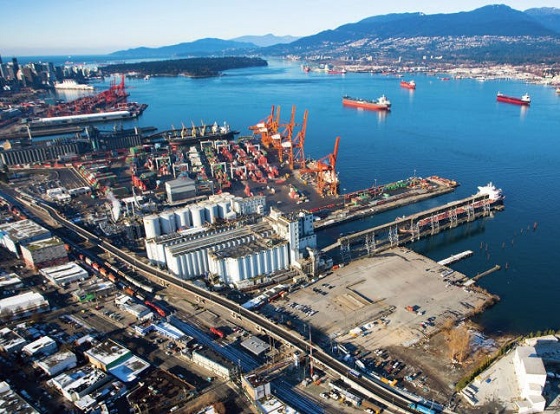Economy
Big Tech’s AI Dreams And Dems’ Electrification Push Are Keeping More Coal Online For Longer

 From the Daily Caller News Foundation
From the Daily Caller News Foundation
By Nick Pope
Power-hungry data centers and Democrats’ broad electrification agenda are teaming up to keep more coal-fired capacity online for longer than initially projected, according to The Wall Street Journal.
Tech companies’ data centers, policies pushing adoption of products like electric vehicles (EVs) and heat pumps and manufacturing activity are quickly driving up electricity demand projections, forcing some utility companies to keep coal-fired power plants operational for longer than anticipated, according to the WSJ. In 2023, S&P Global Commodity Insights projected that the U.S. would retire about 133,000 megawatts of remaining coal capacity by 2035, but the organization’s 2024 outlook now anticipates that roughly 105,000 megawatts of coal-fired generation will be retired by that year.
“Utilities around the country are kind of going into panic mode” because they are finding themselves unprepared for surging power demand, Michelle Solomon, a senior policy analyst at Energy Innovation, told the WSJ. Nearly every regional power market in the U.S. increased their projections for five-year annualized electricity demand growth between 2022 and 2023, with the rate doubling in some instances.
Coal-fired power plants are also benefiting from the fact that green energy generation is not coming online fast enough to replace retiring fossil fuel capacity, according to the WSJ. Coal is a dirtier fuel source than alternatives like natural gas, but the artificial intelligence (AI) boom and Democrats’ push for electrification — an effort intended to counter climate change —are prolonging its use.
“The existing fleet [of fossil-fuel generators] needs to stick around longer and run harder,” Patrick Finn, an analyst at the energy-focused consultancy Wood Mackenzie, told the WSJ. This dynamic will likely be a headwind for cutting emissions, which has been a top domestic and international priority for the Biden administration.
The Biden administration has pursued policies that will drive up long-term electricity demand while making it more difficult to build reliable, cheap fossil fuel-fired capacity.
On the demand side, the administration has pushed policies that will substantially increase the number of EVs on the road and issued regulations that often favor electric appliances, in addition to incentivizing power-intensive manufacturing while the AI boom takes shape. In terms of supply, the Biden Environmental Protection Agency (EPA) has moved to reshape the American power grid by effectively mandating the installation of costly carbon capture and sequestration (CCS) technology for coal plants, requiring that these plants control 90% of their emissions by 2032 if they are to operate past 2039, according to the Center for Strategic and International Studies.
Business
Carney government should retire misleading ‘G7’ talking point on economic growth

From the Fraser Institute
By Ben Eisen and Milagros Palacios
If you use the more appropriate measure for measuring economic wellbeing and living standards—growth in per-person GDP—the happy narrative about Canada’s performance simply falls apart.
Tuesday, Nov. 4, the Carney government will table its long-awaited first budget. Don’t be surprised if it mentions Canada’s economic performance relative to peer countries in the G7.
In the past, this talking point was frequently used by prime ministers Stephen Harper and Justin Trudeau and their senior cabinet officials. And it’s apparently survived the transition to the Carney government, as the finance minister earlier this year triumphantly tweeted that Canada’s economic growth was “among the strongest in the G7.”
But here’s the problem. Canada’s rate of economic growth relative to the rest of the G7 is almost completely irrelevant as an indicator of economic strength because it’s heavily influenced by Canada’s much faster rate of population growth. In other words, Canada’s faster pace of overall economic growth (measured by GDP) compared to most other developed countries has not been due to Canadians becoming more productive and generating more income for their families, but rather primarily because there are more people in Canada working and producing things.
In reality, if you use the more appropriate measure for measuring economic wellbeing and living standards—growth in per-person GDP—the happy narrative about Canada’s performance simply falls apart.
According to a recent study published by the Fraser Institute, if you simply look at total economic growth in the G7 in recent years (2020-24) without reference to population, Canada does indeed look good. Canada’s economy has had the second-most total economic growth in the G7 behind only the United States.
However, if you make a simple adjustment for differences in population change over this same time, a completely different picture emerges. Canada’s per-person GDP actually declined by 2 per cent from 2020 to 2024. This is the worst five-year decline since the Great Depression nearly a century ago. And on this much more important measure of wellbeing, Canada goes from second in the G7 to dead last.
Due to Canada’s rapid population growth in recent years, fuelled by record-high levels of immigration, aggregate GDP growth is quite simply a misleading economic indicator for comparing our performance to other countries that aren’t experiencing similar increases in the size of their labour markets. As such, it’s long past time for politicians to retire misleading talking points about Canada’s “strong” growth performance in the G7.
After making a simple adjustment to account for Canada’s rapidly growing population, it becomes clear that the government has nothing to brag about. In fact, Canada is a growth laggard and has been for a long time, with living standards that have actually declined appreciably over the last half-decade.
Business
Bank of Canada governor warns citizens to anticipate lower standard of living

From LifeSiteNews
“Unless something changes, our incomes will be lower than they otherwise would be.”
Bank of Canada Governor Tiff Macklem gave a grim assessment of the state of the economy, essentially telling Canadians that they should accept a “lower” standard of living.
In an update on Wednesday in which he also lowered Canada’s interest rate to 2.25 percent, Macklem gave the bleak news, which no doubt will hit Canadian families hard.
“What’s most concerning is, unless we change some other things, our standard of living as a country, as Canadians, is going to be lower than it otherwise would have been,” Macklem told reporters.
“Unless something changes, our incomes will be lower than they otherwise would be.”
Macklem said what Canada is going through “is not just a cyclical downturn.”
Asked what he meant by a “cyclical downturn,” Macklem blamed what he said were protectionist measures the United States has put in place such as tariffs, which have made everything more expensive.
“Part of it is structural,” he said, adding, “The U.S. has swerved towards protectionism.”
“It is harder to do business with the United States. That has destroyed some of the capacity in this country. It’s also adding costs.”
Macklem stopped short of saying out loud that a recession is all but inevitable but did say growth is “pretty close to zero” at the moment.
While some U.S. protectionist measures put in place by President Donald Trump have impacted Canada, the reality is that since the Liberals took power in 2015, first under former Prime Minister Justin Trudeau and now under Mark Carney, government spending has been out of control, according to experts. Rising inflation is rampant.
Canadian taxpayers are already dealing with high inflation and high taxes, in part due to the Liberal government overspending and excessive money printing, and even admitting that giving money to Ukraine comes at the “taxpayers’” expense.
As reported by LifeSiteNews, Carney boldly proclaimed earlier this week that his Liberal government’s upcoming 2025 budget will include millions more in taxpayer money for “SLGBTQI+ communities” and “gender” equality and “pride” safety.
As reported by LifeSiteNews, the Canadian Taxpayers Federation (CTF) recently blasted the Carney government for spending $13 million on promotional merchandise such as “climate change card games,” “laser pens and flying saucers,” and “Bamboo toothbrushes” since 2022.
Canadians pay some of the highest income and other taxes in the world. As reported by LifeSiteNews, Canadian families spend, on average, 42 percent of their income on taxes, more than food and shelter costs. Inflation in Canada is at a high not seen in decades.
-

 Environment1 day ago
Environment1 day agoThe era of Climate Change Alarmism is over
-

 Aristotle Foundation22 hours ago
Aristotle Foundation22 hours agoB.C. government laid groundwork for turning private property into Aboriginal land
-

 Business2 days ago
Business2 days agoYou Won’t Believe What Canada’s Embassy in Brazil Has Been Up To
-

 Crime23 hours ago
Crime23 hours agoPublic Execution of Anti-Cartel Mayor in Michoacán Prompts U.S. Offer to Intervene Against Cartels
-

 Bruce Dowbiggin9 hours ago
Bruce Dowbiggin9 hours agoA Story So Good Not Even The Elbows Up Crew Could Ruin It
-

 Automotive2 days ago
Automotive2 days agoCarney’s Budget Risks Another Costly EV Bet
-

 Addictions8 hours ago
Addictions8 hours agoThe War on Commonsense Nicotine Regulation
-

 Business1 day ago
Business1 day agoMystery cloaks Doug Ford’s funding of media through Ontario advertising subsidy



